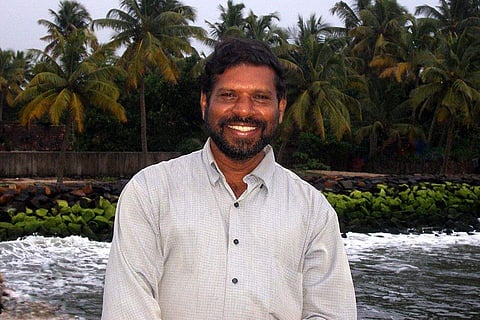

In 1998, the telephone almost never rang. In fact, the concept of telephonic conversations were so new in those days that KJ Antoji jumped in surprise when he heard his wall phone ring for the first time. He was watering his garden at the time and to his surprise, the hose hit the ground so hard that its nozzle buried itself deep in the ground and the pressure of the water dug a 30 cm hole. Before he could finish the phone call, it began to produce water. “I inserted it a few inches deeper after that,” recollects Antoji, “It kept producing water. As it was flexible, I kept going until it was 8 feet below ground. That’s when it stopped. I checked the water tank to see if we were dry. In an hour, I found that the whole thing had gone 8 feet deep. This is how I made the most important discovery of my life: A water syringe.”
In school, Antoji had been taught that the sea was just a little more than 400 metres below ground. Here is where he set his limit. When he realised that the water was spreading 8 feet below ground, he decided to use that knowledge to help people at a time when Kerala was increasingly running out of groundwater. The idea was to use an injection pole and utilise the natural gravity of rain to inject the water 15 inches into the ground. In 1982, Antoji who working as a radio mechanic, found that his invention was not only dismissed by the State Government and water authorities but they also contested his claims. In November 1998, he started conducting tests in his own home and worked on reducing the salinity of the water over the next four years. He ran a small electronic shop in Kochi’s Panampilly Nagar that he soon changed into an office to set up water syringe units for people. Soon, with the power of word-of-mouth and the device's success in a number of homes, the water syringe started to grow in popularity.
The syringe can be set up in a particular home depending on the depth at which it needs to be inserted. Most homes would required 8 to 10 metres. Depending on this, the price for an individual unit can range from Rupees 22,000 to 30,000. Today, the syringes go as deep as 200-400 m. They have managed to divert water into such unimaginable depths that even 2,000 years of rain would not have been able to accomplish it. “In Kochi, it’s normally impossible to find water deeper that 5 feet below ground. With the water syringe, it never goes below the tidal level. You need to systematically create a rope with the natural pressure of gravity from the rain itself. This results in at least one tonne of pressure. It can spread to a depth of 1,000 feet at least,” says the 68-year-old.
In Kochi alone, Antoji has set up more than 400 units. It has been estimated that almost a total water quantity of 400 crore litres has been produced in this time. He says, “What we’ve been able to produce from this is equivalent to what the Idukki Dam creates. The best part of it is that we have never created any negative impact on the groundwater or the environment in this time. And to ensure this, we have made many practical changes over time. We began with a 2 inch pipe which led to water shortage, so we increased it and fixed it at 6 inches. We have adapted to use the best technology to ensure that this runs smoothly.”
Although the water sometimes has a salty taste, it can be filtered easily and made to taste like regular water. Their most recent installation in Panampilly Nagar produced water with a parts per measurement (ppm) — a measurement of contamination in water — of 17. The same amount can be found in store-bought mineral water. He promises, “There is no method that can handle rainwater like this in the world. I said this in ’98 and I say it now.”
